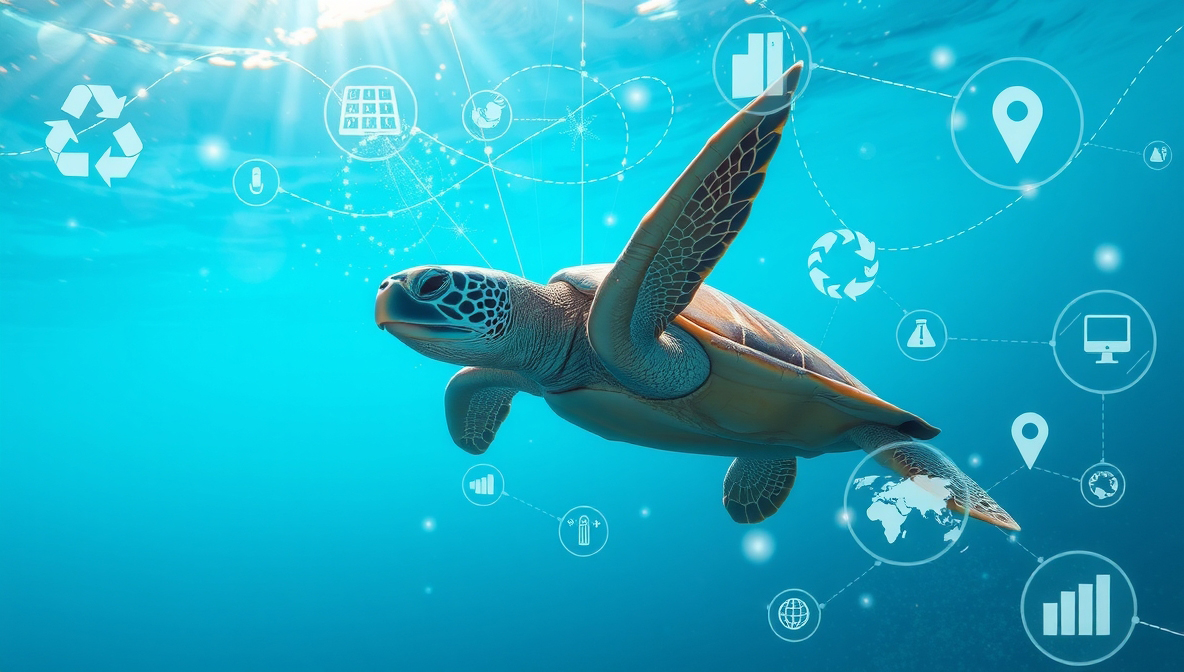
The ocean is vital to the world as we rely on it for transportation, food, water, recreation, medicine, and more. However, it faces unprecedented challenges, including ecosystem destruction, overfishing, rising pollution levels, and the impacts of climate change.
In this context, leveraging advanced technologies such as artificial intelligence (AI) and the Internet of Things (IoT) becomes crucial to effectively monitor, manage, and protect marine ecosystems. The ability to collect data across various connected devices and platforms presents a powerful solution for addressing these challenges that we’ll explore in this blog.
Monitoring and Tracking Marine Species
As climate change and poor fishing practices continue to permeate our oceans, some effects can be seen in species endangerment and extinction. Fortunately, IoT-enabled tags and sensors can help monitor various marine species by tracking their movements and gathering data on migration patterns, feeding grounds, and breeding habitats. This data can then help researchers, environmentalists, and law enforcement identify areas requiring more attention and effort.
OCEARCH, a global nonprofit dedicated to accelerating the ocean’s return to balance and abundance, uses smart tags to track and monitor the sea life of more than 400 animals1. For instance, OCEARCH tracks sharks that are hunted because they are essential to a functioning ecosystem that maintains biodiversity2. Removing these apex predators from the environment could cause disruption and imbalance in the ecosystem. Users can view OCEARCH’s efforts through their app and website.
Detecting Pollutants
Every year, about 26 billion pounds (about 11,793,392,000 kg) of plastic3 and hundreds of millions of gallons of oil4 end up in our oceans. Recent IoT technology can help detect and monitor pollutants in marine environments by collecting real-time data on water quality, chemical pollutants, and oil spills.
The Liquid Robotics Wave Glider is an autonomous robot outfitted with IoT sensors5. It floats on the ocean’s surface and gathers data that was too challenging or costly to accrue in the past. The Wave Glider uses fluorometry sensors to detect substances and pollutants in the water, including crude oil and refined fuels.
As part of the research by the Philippine-California Advanced Research Institutes, they have deployed Wave Gliders to help map out the sewage discharge and polluted waters near the Boracay Islands to ensure the beaches pose no health hazards to the public6. They can then use this data to focus their cleaning efforts.

Combating Illegal Activities and Creating Safer Maritime Operations
With over 70% of the earth’s surface covered by oceans7, it’s no secret that our oceans are massive. As such, patrolling the ocean for illegal and unsafe activities is difficult. However, utilizing data-based sensors presents an innovative approach that can help reduce these activities and increase operational safety.
Pelagic Data Systems’ Vessel Tracking System supports autonomous tracking and monitoring of ocean vessels of all sizes8, enabling users to monitor ocean traffic and help ships avoid potential collisions. The Vessel Tracking System can also help users manage illegal activity in restricted-use marine areas and other activities that pose a significant threat to marine conservation and sustainability.
Outlook of Technology in Maritime Operations
Looking ahead, the future of connected sensors in maritime operations is promising. Advances in sensor technology, data analytics, and connectivity will continue to drive innovation in marine conservation and safety. From autonomous underwater vehicles to satellite-based monitoring systems, IoT and AI will play an increasingly pivotal role in protecting our oceans, preserving marine biodiversity, and ensuring sustainable maritime practices.
As technology advances, continued investment in these solutions is critical to safeguarding our marine ecosystems for future generations.
How Ambiq Is Contributing
AI and IoT are powerful tools in marine conservation and safety, providing a foundation for impactful solutions that can address our oceans’ conservation and safety challenges.
That said, there aren’t any power outlets in the middle of the ocean. Consequently, marine IoT technology requires long-lasting batteries to power the ongoing collection and transmission of ocean-related data. Ambiq’s System-on-Chips (SoCs) both enhance data processing capabilities and extend battery life while consuming ultra-low power levels. Discover and learn more about Ambiq’s possible applications here.
Sources:
1 About – OCEARCH | 2024
3 Ocean pollution – 11 facts you need to know (conservation.org)
Four https://oceantoday.noaa.gov/oilintheocean/
5 The Wave Glider | Unmanned Surface Vehicle by Liquid Robotics (liquid-robotics.com)
6 Monitoring Reefs, Pollution, and Mariculture in the Philippines | March 25, 2019


